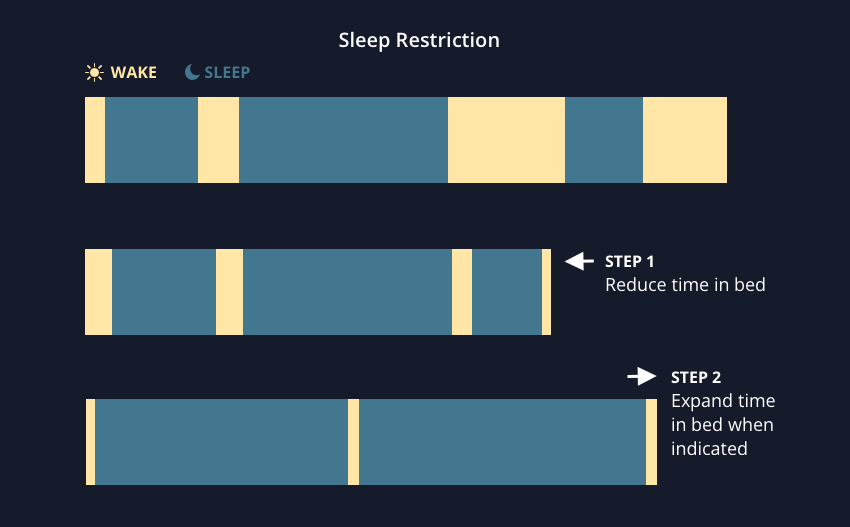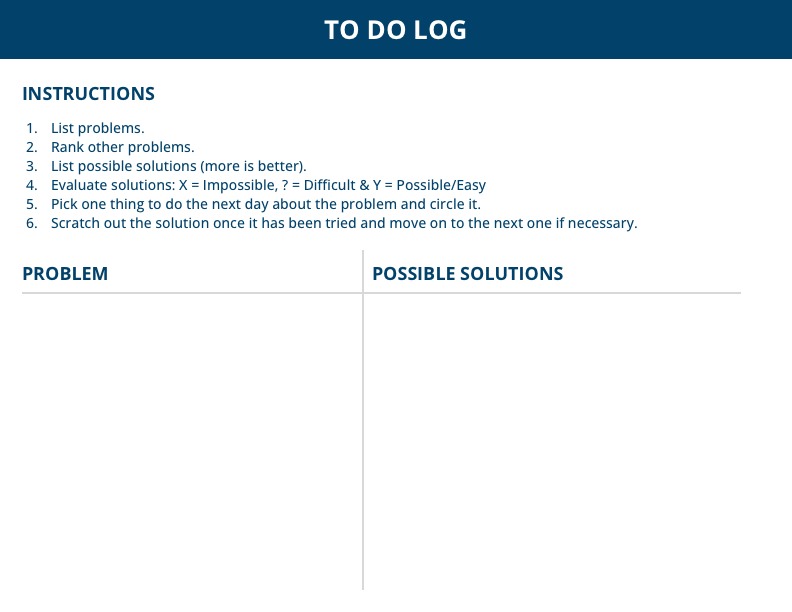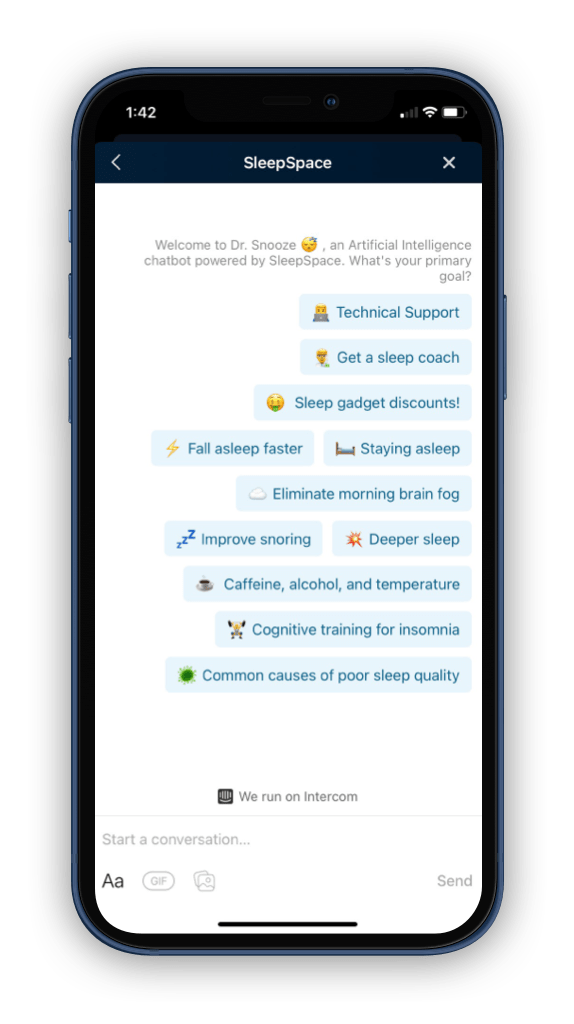Falling Asleep Guide
Simple steps to fall asleep faster and stay asleep longer
By Dr. Dan Gartenberg
Last Updated: Jan 1, 2025
Falling and Staying Asleep Guide Overview
If you are reading this then you are having problems falling asleep and/or staying asleep. This can be quite a struggle but there are some basic steps to address this issue based on the proven techniques involved in Cognitive Behavioral Therapy. Our sleep guide involves addressing maladaptive thoughts around sleep and creating new behaviors that change how you feel about sleep. A big part of falling asleep and staying asleep is listening to your body, knowing when you are tired, and not fixating on anxious thoughts or the struggle of getting enough asleep.
*Important note - this advice is only relevant if you do not have another underlying issue. If you suspect you have an underlying issue, such as sleep apnea or hypersomnia, then the below feedback is not relevant to you.
10-Step Sleep Guide
1) Address maladaptive thoughts
We developed Dr. Snooze to guide you towards better ways of thinking about your sleep. You can access this from the SleepSpace app or:
1) Visit Dr. Snooze in the Coach tab of SleepSpace or on this site.
2) Tap/click Ask Dr. Snooze
3) Tap/click Cognitive training for insomnia
2) Use SleepSpace
SleepSpace is designed to block disruptive noises, help you relax, and to measure sleep quality. Try the nature sounds wind down 10 mins before your bedtime to further prepare your brain for sleep. When you have trouble falling asleep, try the Progressive Muscle Relaxation, Yoga Nidra, Diaphragmatic Breathing or other sounds to relax in SleepSpace. Ideally, do this outside of your bedroom (but it's not critical). Remember, we are trying to associate your bed with sleep only. You can also connect SleepSpace to smart lights and schedule them to change at your ideal bedtime. SleepSpace also includes vibration biofeedback designed for relaxation (Apple Watch required).
3) Try stimulus control
Part of our sleep guide includes good sleep hygiene. This means reserving the bed for sleep and sex only. If you can't fall asleep within 20 minutes of getting into bed, try laying down in a dark comfortable environment, like the couch in your living room. Try reading a book or doing progressive muscle relaxation. Remember sleep isn’t something that is forced, but something that comes on naturally. Feel free to fall asleep on the couch or go back to bed when you feel tired.
4) Restrict time in bed
When you have problems falling asleep, it's easy to think, “I need to spend much more time in bed to get the sleep I need.” The problem with this is that you are often awake in bed, which exacerbates the problem. Instead, do the exact opposite and spend less time in bed. If you are only sleeping about 6 hours a night, try to spend only about 6 hours in bed. This will build up your homeostatic sleep drive. This figure shows typical sleep for someone who struggles with falling asleep and staying asleep (top), the suggested solution of restricting time in bed (middle), and then finally extending the time in bed gradually by about 15 minutes per night once your sleep efficiency is above about 85%. If you have a tough night, try to still keep to the same schedule.
Here are some relevant links about sleep compression:
http://sleepdisorders.sleepfoundation.org/chapter-2-insomnia/cbt-overview/cbt-sleep-restriction/
https://stanfordhealthcare.org/medical-treatments/c/cognitive-behavioral-therapy-insomnia/procedures/sleep-restriction.html
https://thrive.kaiserpermanente.org/care-near-you/northern-california/sanjose/wp-content/uploads/sites/7/2015/10/sleep-restriction-rev2_tcm28-557887.pdf

5) Have the right mindset for sleep
Check out this recent podcast by Andrew Huberman that breaks down how to think about sleep. Dr. Huberman also recommends a sleep supplement stack with GABA and we found that this GABA-based solution has the most clinical backing as effective, called MDsleep.
6) Control your light and temperature at night
Technically, we should never get blue light at night - it should all be red. You can use the TrueDark glasses to entrench your circadian rhythm and block blue light close to bedtime. You can further augment this with LIFX bulbs, setting them up to emit dim light at night. Black-out blinds are super important or you can try a simple eyemask solution like this one. By controlling sunlight during the day you actually produce more melatonin at night, which helps you sleep.
When it comes to temperature, it is important to keep your bedroom cool. A cold room (around 68 degrees) can help you fall asleep faster. To really take temperature optimization to the next level, we recommend the Perfectly Snug Topper.
7) Control your light in the morning
Everyone should get at least 30 minutes of light exposure every day before noon, ideally, in the first hour of waking up. Going for a morning walk will do the trick. This helps entrench your circadian rhythm and improve your sleep quality. We also suggest the Verilux lamp – or any other 10000 lux lamp to give your body light cues. You can even put this on your desk while you work in the mornings.
Try not wearing sunglasses! It’s a small but helpful hack to give the photoreceptors in your eyes more light. Alternatively, look towards the sun for a few minutes every day.
8) Don't take naps
In our sleep guide, we are trying to build up your body’s drive to sleep. Therefore it is suggested to not take any naps, and if you are tired, try to do an activity that invigorates you. It can also help to drink coffee about an hour after awakening and not to have a heavy meal at lunchtime.
9) Add relaxation/unwinding to your bedtime routine
Watching relaxing TV isn’t the worst thing, but definitely do not use your phone. Try progressive muscle relaxation 30 minutes before bed or another meditation found in SleepSpace to ease the mind into sleep and reduce the flight or fight response. After a few times, you will train yourself to do this on your own. If you wake up in the middle of the night and can’t sleep for about 15 minutes, the best thing is to get out of bed and read a relaxing book, meditate for about 10 minutes, or maybe eat a small snack, and then try to go back to sleep.
10) Complete the problem and solution log
The final step of our sleep guide is a simple log you can use to address racing thoughts. Getting out all the thoughts during the day and finding practical solutions can prevent your mind from racing at night.

Get your notebook and a pen/pencil and create two columns. Create one column for problems that you are currently ruminating about. Then create another column for possible solutions to the problem. Start by listing all the problems that come across your mind, then rank order the problems based on their severity. Once you get out all the problems, think about possible solutions and write them in the solutions column. Then evaluate how hard it would be to implement those solutions. Circle the solution for the problem that you would like to do today. Then scratch it out once you have tried it. If it worked at reducing your worry, great! If not, try another solution and continue the process.
What do I do if you have problems waking up in the middle of the night?
Dr. Gartenberg describes some of the most recommended solutions for this problem that include:
1) Preparing for sleep with a wind down can actually help keep you asleep later.
2) Physiological reason for waking up later in the night is that you are more likely to be dreaming in REM sleep and a stressful dream can then cause an awakening. Additionally, your sleep pressure is less as the night goes on, so it's easier to awaken.
3) If you can't sleep for 15 minutes or more, get out of bed and distract yourself from the rumination cycle until you are tired again.
4) One of the best things is to read a book in a dimly lit room, ideally with a red hue light.
